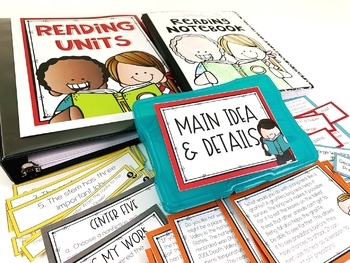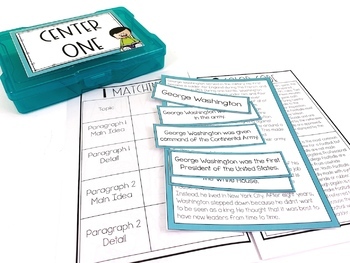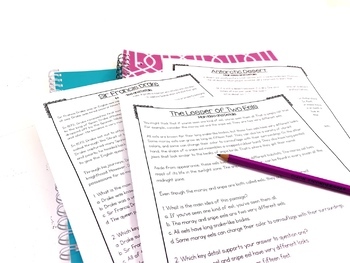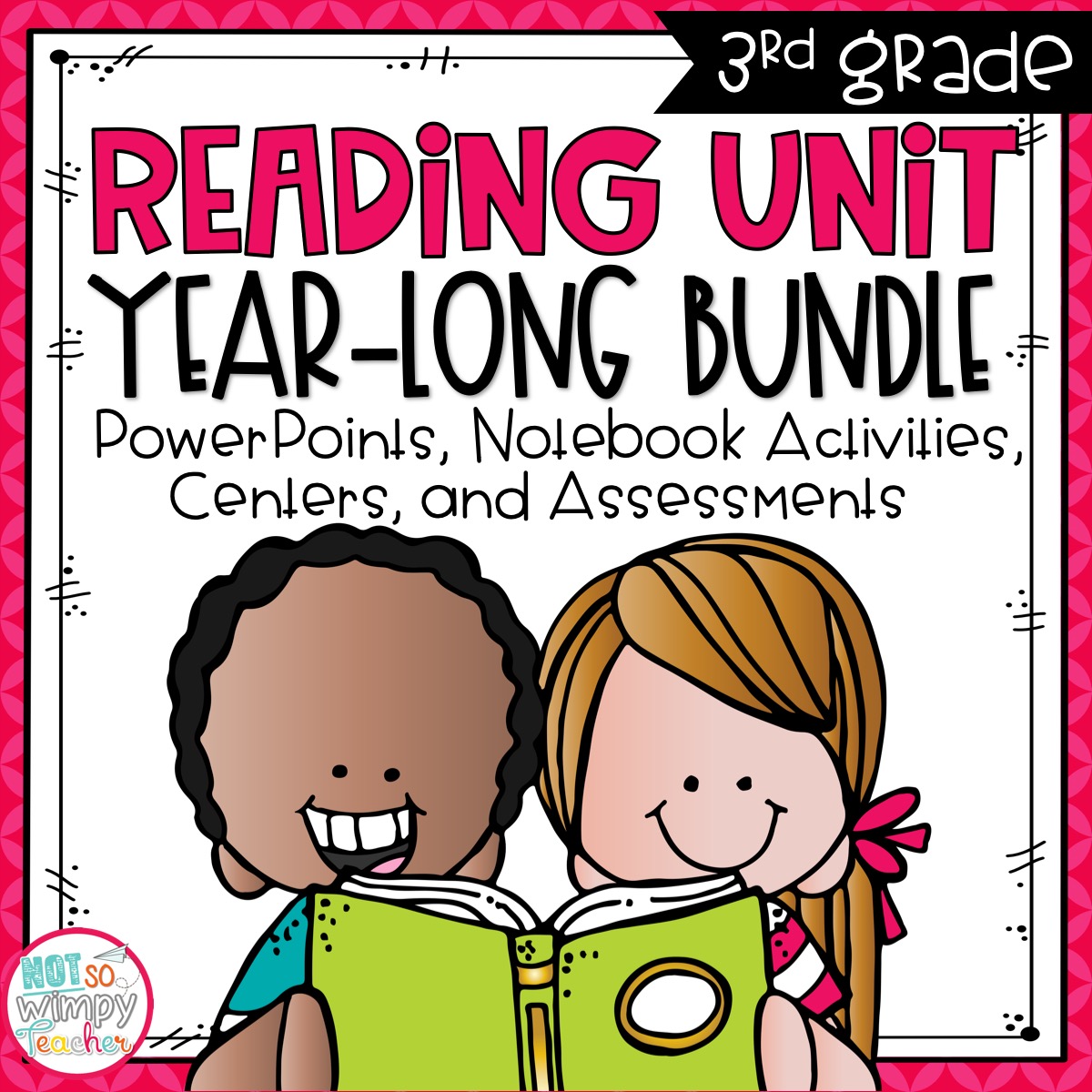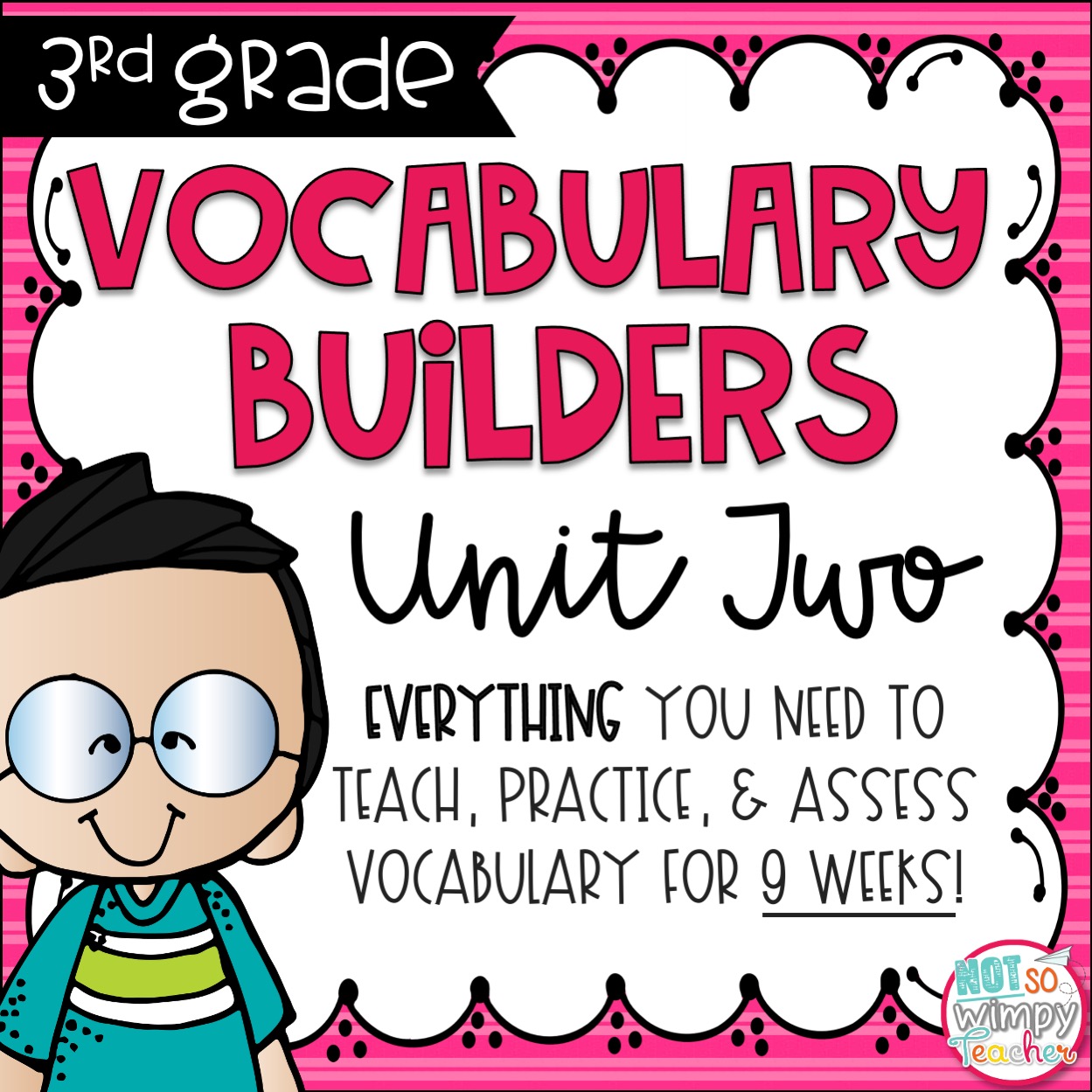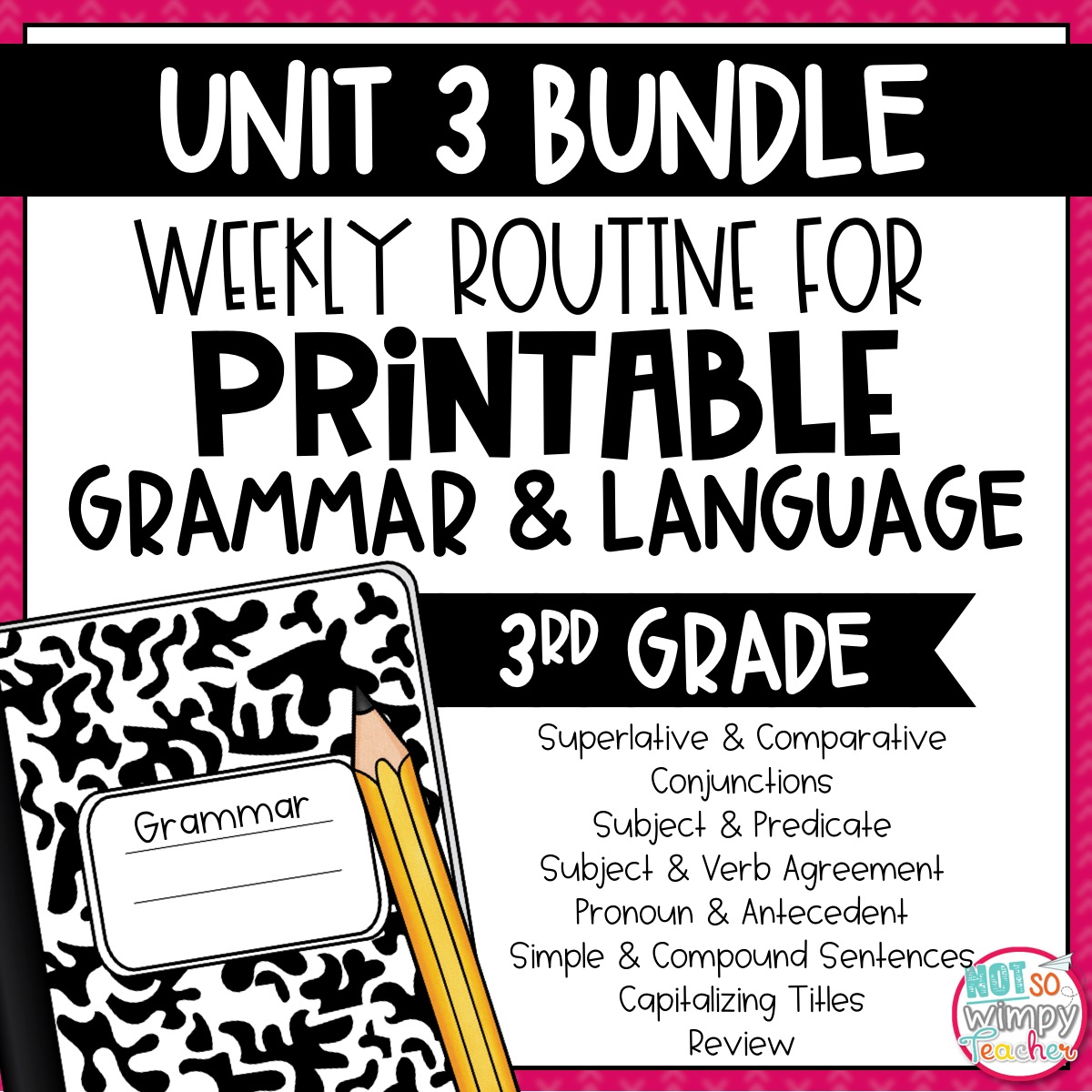This reading unit includes a PowerPoint that makes it simple. You can download it and teach the skill today! There are also two interactive notebook activities, centers, and three passages that can be used in reading groups or as assessments.
Main Idea and Details Nonfiction Reading Unit With Centers
Save MORE with Lesson GenieMore about this resource
Description:
“I love these units…so much more teacher-friendly and student-engaging than that other curriculum out there that can be so overwhelming.” – Candace R.
Some people climb Mt. Kilimanjaro. Others run marathons or even ultramarathons. There are people who dog sled in the Iditarod or pull trains with their teeth.
And then there are the 3rd grade teachers who must teach their students to identify the topic, main idea, and supporting details in a nonfiction text—no matter what curriculum and resources they’re given (if any)—so they can perform well on standardized testing. *moment of silence*
We’ll be blunt: this is a tough reading skill to teach! If your students have ever struggled to pick out the topic, main idea, and supporting details—you’re not alone. Or, your students may be able to pick out these pieces, but they confuse the topic for the main idea, etc. And if you don’t have curriculum or resources that are complete and engaging—well, if you started thinking a triathlon might be easier, we don’t blame you!
But, don’t give up. Just like any of those feats of strength: it’s tough, but not impossible. The Not So Wimpy Teacher Main Idea Reading Unit makes it much easier for you to teach this important skill.
This reading unit includes a PowerPoint that makes it simple. You can download it and teach the skill today! There are also two interactive notebook activities, centers, and three passages that can be used in reading groups or as assessments.
The unit is intended to be used over a two-week time frame, but this can easily be adjusted to meet your needs.
This unit does not correlate with one particular reading curriculum, but it has been designed to supplement any materials or routines that you already have in place. You can use any non-fiction books (or magazines) you already have in your classroom library or school library.
The resource was designed for third graders. It may be appropriate for some second or fourth grade classes.
What’s Inside:
- Teacher Directions & Tips
- PowerPoint Mini Lesson
- 2 Interactive Notebook Activities
- 5 Centers (Including reading response)
- 3 Passages/Assessments (with answer keys)
- Teacher Binder Cover
- Student Notebook Cover
PowerPoint
The PowerPoint slide show is designed to be used as an introduction to the skill. It is short enough to be used as a mini lesson prior to your reading groups. The slides get students to participate, practice and discuss the skill. It’s also so easy that you can download it and just teach from it—little to no prep necessary.
Interactive Notebook Activities
- This unit includes two interactive notebook activities. You might choose to do one of these each week as a whole group activity, or you might choose to use them in small groups or centers.
- The activities have very simple cuts so that precious time is not wasted in class.
- The first activity allows students to take notes on the meanings of the terms topic, main idea and supporting details. The second activity has text and questions that ask students to identify the topic, main idea and at least one supporting detail.
- Students will need a notebook (spiral or composition), scissors and glue.
BONUS: If you also use my grammar units, one notebook will easily fit all of the grammar and reading notebook activities. I included a cover and dividers for this.
Centers
The unit includes FIVE centers and one student recording book. The answers to all five centers can be written into the one recording book. The recording book takes two sheets of paper.
These centers include text, matching, task cards and color coding activities.
The final center is a reading response activity. Students will need access to some nonfiction books, articles or passages. The center will require that they read two different texts and identify the main idea and at least two supporting details. You can allow them to use read alouds, choose books from your classroom library or choose from a basket of books that you have preselected. This works well with classroom magazines too. You could even have them use a nonfiction story from your basal.
The centers include student-friendly directions and were intended to be clear enough for students to complete independently while still providing adequate practice of the reading skill.
I highly recommend putting all five centers out and allowing your students to complete the center activities in any order that they wish.
There are color and black-line versions included. Labels for the centers are also included.
These centers take five sheets of paper. I do recommend cardstock and lamination for durability. Depending on the size of your groups, you might want to print more than one copy of each center.
I made the centers with the plan that students would complete them in two weeks. This will somewhat depend on how much center time you have scheduled. If students finish early, I would recommend having them choose a book and read to themselves.
Assessments/Passages
This unit includes THREE different passages with 3 questions on each passage. The questions focus specifically on this reading skill.
The passages can be used in a variety of ways. You can use them as a pre-test, post-test and a re-test. You could use 1-2 of them in your reading groups and then use the last one as an assessment at the end of the two-week unit. They can be done as a whole group lesson.
Other Reading Units:
Asking & Answering Questions- Fiction
Poetry & Figurative Language- Fiction

